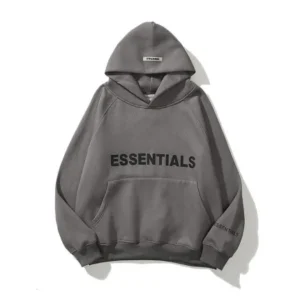
Indigo fabric has been cherished for centuries for its deep, rich blue hues and cultural significance. From ancient civilizations to modern fashion, indigo dyeing has maintained its place in the world of textiles due to its vibrant color, durability, and versatility. This fabric isn’t just a fashion statement; it’s a piece of history that speaks to artisanal craftsmanship and traditional dyeing techniques that have been passed down through generations.
In this blog, we will explore the fascinating world of indigo fabric, its rich history, the dyeing process, and how you can incorporate it into your everyday wardrobe and home décor.
The Rich History of Indigo Fabric
Indigo fabric has a storied history dating back to ancient times. The indigo dye, which comes from the indigo plant (Indigofera), was first used in various regions of Asia, Africa, and South America. Its popularity spread quickly, and it became a highly sought-after dye for textiles in the ancient world.
In India, indigo dyeing has been an integral part of the textile industry for over 4,000 years. Known as “Neel,” indigo dye was highly prized by royalty and nobility. Its unique blue color was associated with wealth and power, and indigo-dyed fabrics were used in everything from royal garments to ceremonial attire.
European demand for indigo grew during the 16th century, with indigo becoming one of the most valuable trade commodities. It was so prized that it was often called “blue gold.” The popularity of indigo only increased with the rise of denim in the 19th century, cementing its place globally.
The Indigo Dyeing Process
What sets indigo fabric apart from other textiles is its unique and labor-intensive dyeing process. Traditionally, indigo dye is extracted from the leaves of the indigo plant, which are fermented and mixed with water. The fabric is then repeatedly dipped into the dye vat, where the color oxidizes and deepens with each dip. This process creates the deep, characteristic blue hue that indigo is known for.
The dyeing process is complex and time-consuming, requiring skill and patience. The result, however, is a fabric that not only boasts a rich, deep blue color but also has a beautiful texture and variations in tone that make each piece unique. Artisans often use resist dyeing techniques, such as block printing and tie-dye, to create intricate patterns and designs on indigo fabrics, adding an extra layer of artistry.
Characteristics of Indigo Fabric
Indigo fabric is prized for several key qualities:
- Vibrant Color:
The deep blue hue of the indigo fabric is striking and timeless. It doesn’t fade quickly, maintaining its richness even after repeated use and washing. - Durability:
Indigo-dyed fabrics are known for their durability, making them ideal for everyday wear and home décor items. The dye penetrates deeply into the fabric, allowing it to withstand wear and tear without losing its charm. - Natural, Earthy Appeal:
Indigo fabrics often have a natural, organic look due to the handmade dyeing process. Each piece has slight variations in shade and pattern, making it unique. - Breathability and Comfort:
Indigo fabric is typically made from natural fibers like cotton or linen, ensuring breathability and comfort. It’s perfect for clothing that is both stylish and functional.
Incorporating Indigo Fabric into Your Wardrobe
Indigo fabric’s versatility makes it a staple in both traditional and contemporary fashion. Whether you prefer ethnic wear or modern styles, indigo fabrics can easily be incorporated into your wardrobe.
- Indigo Kurtas and Sarees:
In India, indigo-dyed kurtas, sarees, and dupattas are highly popular for their effortless elegance and comfort. These pieces are perfect for casual outings, office wear, or even festive occasions when paired with the right accessories. - Indigo Dresses and Tunics:
For a modern twist, indigo-dyed dresses and tunics are a great option. Whether it’s a casual day out or a relaxed evening event, indigo garments offer a chic yet comfortable option that stands out. - Denim and Indigo Jackets:
Indigo-dyed denim is a wardrobe essential. A well-fitted pair of indigo jeans or a classic indigo jacket can instantly elevate your look. Pair them with a white top for a timeless, effortlessly stylish ensemble. - Indigo Accessories:
Scarves, stoles, and bags made from indigo fabric add a touch of artisanal flair to any outfit. These accessories bring a pop of color to neutral outfits and are perfect for year-round use.
Indigo Fabric in Home Décor
Beyond clothing, indigo fabric is a wonderful addition to home décor. Its deep hues bring warmth, richness, and a touch of tradition to any living space.
- Cushion Covers and Pillowcases:
Indigo-dyed cushion covers and pillowcases add a splash of color and texture to your living room or bedroom. Pair them with neutral or earthy tones to create a cozy, inviting ambiance. - Throws and Blankets:
An indigo throw or blanket draped over your sofa or bed creates a bold visual statement while adding comfort and warmth. The natural variation in the dye gives the fabric a handmade, artisanal look. - Table Runners and Napkins:
Indigo table runners and napkins can elevate your dining experience, providing a rustic yet sophisticated look. Paired with wooden or ceramic tableware, they create a perfect blend of traditional and modern décor.
Conclusion
Indigo fabric is much more than just a beautiful blue textile. It’s a celebration of tradition, craftsmanship, and style that has stood the test of time. Whether you’re adding a touch of indigo to your wardrobe or incorporating it into your home décor, this timeless fabric offers endless possibilities for creativity and expression. With its rich history, vibrant color, and versatile nature, indigo fabric continues to be a beloved choice for those who appreciate both art and fashion.






